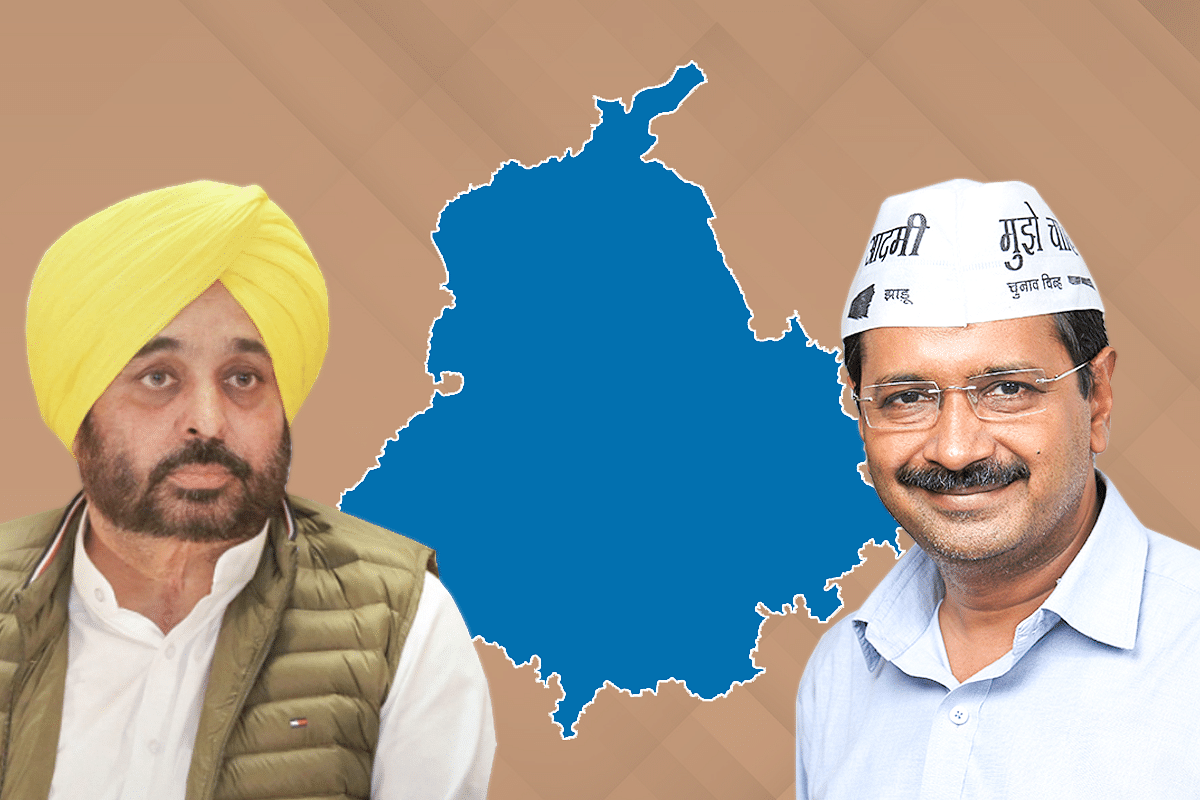Context
Disastrous Economics! Punjab Considers Reintroducing Old Pension Scheme

Punjab CM Bhagwant Mann (left) and Arvind Kejriwal (right)
Punjab CM Bhagwant Mann has said his government is considering restoring the old pension scheme (OPS) for government employees.
Context: Mann tweeted that he has asked his "Chief Secretary to study the feasibility and modalities of its implementation."
He added: "We stand committed to the welfare of our employees."
Coming back? If the OPS is reintroduced, Punjab will join Rajasthan, Jharkhand, and Chhattisgarh in the list of states that have reverted to OPS.
As elections approach, the demand for OPS is rising in states like Himachal Pradesh and Gujarat as well.
Demanding OPS implementation, thousands of government employees in Gujarat recently went on a 'mass casual leave' protest.
Both AAP and Congress have promised to restore the old pension scheme in Gujarat if elected to power.
The Congress has said it will implement the old pension scheme in Himachal Pradesh within 10 days if voted to power.
Pension schemes, old and new. Under OPS, pension was 50 per cent of an employee's last-drawn salary and the entire amount was paid by the government.
The scheme was discontinued on 1 April 2004 and replaced with the national pension scheme (NPS).
Under NPS, the employee pays 10 per cent of their salary towards the pension fund, with the government contributing 14 per cent.
The amount is then deposited with the Pension Fund Regulatory and Development Authority, protected by a lock-in period.
Any advance withdrawal can happen only with the prior permission of the pension fund authority.
What if OPS returns? To say it simply, there will be gain in the short-term and pain over the long run.
Removal of the fiscal commitment — of 14 per cent of employee salary — to NPS will improve state finances in the short term.
Government employees will be happy because they will no longer be required to make a 10 per cent contribution to the scheme. They will be left with extra cash.
But here's the deal: The already stressed state economies will face a heavier fiscal burden at a later time, say from the mid-2030s.
This is when employees recruited in 2004 and later start retiring and their pensions have to be paid.
There will be no way to cut down on this stress. The pension — linked with pay commission awards and dearness allowances — will keep rising with time.
Quote. “Wow! A great decision. All employees across India want old pension scheme to be restored,” AAP national convener and Delhi CM Arvind Kejriwal tweeted soon after Mann's OPS tweet.
Experts are worried: The world is still emerging from the economic after-effects of the pandemic, notwithstanding the massive debt burdens. In this context, OPS reintroduction is, politely speaking, fiscally irresponsible.
Government employees, a small part of any state's population, will walk away with the lion's share.
The state will have less fiscal space for development expenditure, which is crucial for sustainable growth.
The rate of return from a fund depends both on the market rate of return and the temporal growth of contributions.
This means that if more states switch to the old pension scheme, the rate of return from NPS will suffer, thereby further making an economic case for a switch.
This will unleash a vicious cycle of bad economics and bad outcomes.
When in a hole, stop digging. Unfortunately, this age-old wisdom is lost on Punjab's political leadership.
The state is already under back-breaking debt. According to Mann, the state has a debt of over Rs 3 lakh crore.
Salaries and power subsidies are the two biggest burdens on the state exchequer, accounting for over Rs 50,000 crore.
Other liabilities include just over Rs 20,000 crore towards interest payments and just over Rs 15,000 crore towards pensions and retirement benefits.
Punjab also has to pay close to Rs 28,000 crore towards repayment of advances and loans, and Rs 20,000 crore towards repayment of ways and means advances.
AAP's revdi culture: Despite being aware of this abysmal situation, AAP has promised thousands of crores worth of doles.
These include 300 units of electricity free per month to every household as well as free water, plus Rs 1,000 every month to all women in the state.
Punjab CM requested PM Modi for a central grant of Rs 1 lakh crore in March to fund its freebies. Though no such grant was issued, the AAP government in Punjab has already started distributing free electricity.
Bottom line: This is reckless populism.
AAP is condemning future generations to compromise on their development expenditure.
For what? To foot bills against promises once made for short-term gains and the benefit of not very many.
Support Swarajya's 50 Ground Reports Project & Sponsor A Story
Every general election Swarajya does a 50 ground reports project.
Aimed only at serious readers and those who appreciate the nuances of political undercurrents, the project provides a sense of India's electoral landscape. As you know, these reports are produced after considerable investment of travel, time and effort on the ground.
This time too we've kicked off the project in style and have covered over 30 constituencies already. If you're someone who appreciates such work and have enjoyed our coverage please consider sponsoring a ground report for just Rs 2999 to Rs 19,999 - it goes a long way in helping us produce more quality reportage.
You can also back this project by becoming a subscriber for as little as Rs 999 - so do click on this links and choose a plan that suits you and back us.
Click below to contribute.
Latest